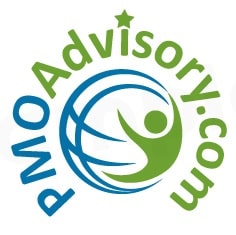(Metrics): What data is the most relevant for reporting out on portfolio progress?
Synthesized by Te Wu.
Specific contributors include:
-
- Cédric Kahl
- Cristina Niculescu
- David Vincenti
- Kris Sprague
- Todd Generotzke
- Anonymous
As organizations mature in their portfolio management capabilities, a fundamental shift is occurring—from a focus on traditional performance metrics to a more strategic interpretation of data. This evolution is particularly pronounced among publicly traded companies, where stock valuations increasingly hinge not on baseline financial metrics alone, but on the perceived alignment between stated strategic objectives and actual investment behavior. For example, investors are now scrutinizing whether portfolio allocations to innovation, despite their inherently higher failure rates, are truly advancing long-term growth goals.
Executives and portfolio managers alike are being challenged to go beyond reporting “decent” key performance indicators (KPIs). What matters now is how those indicators reflect the organization’s strategic intent. High-performing firms are reframing their dashboards to integrate multi-dimensional metrics such as:
- Financial KPIs (e.g., budget adherence, forecast vs. actual spend)
- Strategic Alignment Indicators, often structured around Objectives and Key Results (OKRs)
- Risk Metrics, including trend-based indicators like velocity of risk exposure
- Resource Utilization, capturing not just quantity but strategic deployment
- Value Delivery, quantified in terms of customer impact, market responsiveness, and realized benefits
Modern tools like Power BI and Tableau, when combined with project platforms like Jira Align, enable dynamic, real-time aggregation of these data points. However, tools are only as valuable as the insights they produce. The imperative is clear: ensure the C-suite can see, at a glance, how the organization’s investments are tracking toward strategic priorities. This includes visibility into the percentage of initiatives aligned with core goals, the progress of benefit realization, expected versus actual Net Present Value (NPV), and the proportion of investment distributed across strategic themes such as acquisitions or operational excellence.
Portfolio health is no longer just a summary of green, yellow, and red statuses. It is a reflection of strategic coherence and alignment with strategy. Mature organizations leverage portfolio maturity assessments not just as audits, but as learning tools to identify measurement gaps and sharpen decision-making. By doing so, they enable a virtuous cycle of insight, adjustment, and acceleration—where every project isn’t just executed well, but executed with purpose.
Contribution by: Cédric Kahl
“% of total investment”, “PoS”, and “forecasted value” by project stage (early vs late) and by strategy element or theme.
Strategy element or theme being the breakdown of the strategic goals (eg: “Acquisitions” would be a strategy element/theme of the strategic goal “Growth to $XB”).
Contribution by: Cristina Niculescu
First comes data about financial health, then about risks statuses and levels, about critical issues (escalations), final about the delivery dates. Here they are in a more structured way:
- Financial KPIs
- Strategic alignment indicators (OKRs)
- Risk metrics (e.g., velocity of risk movement)
- Resource utilization
- Value delivery (customer/market impact)
Use dashboards like Power BI or Tableau integrated with tools like Jira Align.
Contribution by: David Vincenti
Getting beyond analytics to strategy – publicly-traded companies are starting to see stock prices diverge from expectation as analysts look past “decent” metrics to gaps between metrics and stated strategic objectives (eg, portfolio investments in innovation, which have higher failure rates)
Contribution by: Kris Sprague
The most relevant data for portfolio progress reporting includes project status, financial performance, resource utilization, risk assessments, and alignment with strategic goals.
This information helps stakeholders understand the portfolio’s health, identify potential issues, and make informed decisions.
Contribution by: Todd Generotzke
Making sure that the C-Suite feels that the projects are aligned with the strategic goals and objectives and value delivery.
Understanding the percent of the initiatives that align with key strategic goals and key results is paramount. Ensuring that there are no gaps between strategic initiatives and strategic priorities. Knowing the progress of benefit realization (% value delivered), the NPV and expected versus actual value would be data I consider to be essential.
Contribution by: Anonymous
Relevant data can be aggregated from projects into portfolio health indicators. (project forecast vs actual, In-Service Date Performance, value realization) Portfolio performance metrics should also align with business strategy. Consider a portfolio maturity assessment to determine what areas to shore up through metrics.
